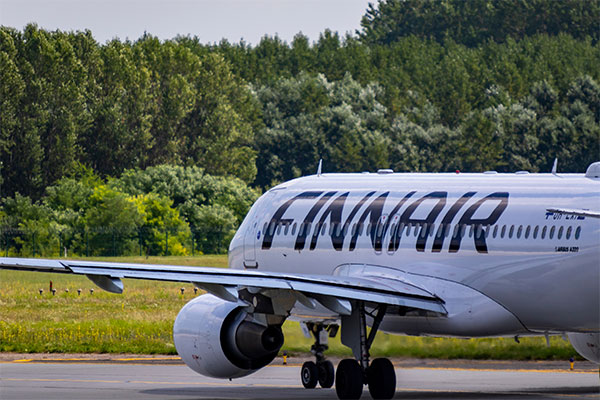As suggested in Finnair’s third-quarter earnings call, the airline has moved to defer the arrival of three new Airbus A350-900s. The airline’s CEO had said that negotiations were ongoing with Airbus during the results presentation last month, and today it has confirmed that agreement has been reached. The A350s will now arrive some 24 months later than originally planned.
Finnair has confirmed plans to defer three of its A350 aircraft as it works to rebuild its business out of the COVID crisis. The airline has postponed the deliveries for 24 months and will now not take any more widebody aircraft until 2023.
The three remaining A350s were set to join the carrier’s existing fleet of 16 of the type in the second quarter of 2021 and the same quarter of 2022. The new delivery dates for the aircraft will now be two years on.
Christine Rovelli, Senior Vice President, Finance and Fleet Management at Finnair, commented on the move in a statement, saying,
“Finnair has been in intensive negotiations with all of its suppliers during the COVID-19 pandemic, seeking to reduce expenditures in order to support our ramp-up plans when traffic recovers. This agreement will give us more flexibility to deploy the existing fleet more efficiently and improve cash flow.”
Speaking at the airline’s third-quarter earnings call last month, CEO Topi Manner had indicated plans were in place to make these deferrals and that he hoped to be able to confirm an agreement with Airbus soon. Today, with the agreement reached, Finnair says it will claw back an estimated €200 million ($238 million) from its investing activities in 2021.
The A350s will now arrive around 24 months later than planned.
As an airline with a strong focus on long-haul operations, Finnair has been greatly affected by the COVID pandemic. Much of the airline’s business involved shuttling passengers between North America and Asia, using its northerly hub location to its benefit in the process.
With European access to North America still limited and Asian passenger demand well down, the airline has had a large bite taken out of its long-haul operations. In its October traffic report, the airline noted that no passenger flights took place to North America, while just 6,800 passengers were flown between Finland and Asia.
Over the month, it transported just over 100,000 passengers, including its domestic and regional routes, which is 92% fewer than in the same period of 2019. It was down 12.8% from the previous month too, as the summer came to an end and what little European demand had existed began to drop off.
Cargo has helped the airline bring in some revenue. Photo: Finnair
While the airline has focused on cargo operations to keep its head above water, it hasn’t been enough to save it from needing to make cuts. Just last month, it revealed plans to cut around 10% of its workforce. The approximately 700 jobs to be lost is fewer than the previously estimated 1,000, it’s still a hard pill to swallow for this previously very profitable airline.
Taking all this into account, it’s no surprise that Finnair no longer wants more A350s in the coming years. Its winter flight schedule is very short-haul heavy, with 45 of its 51 destinations within Europe. While it’s still operating to Asian destinations including Bangkok, Seoul, Tokyo and Hong Kong, it’s a heavily trimmed schedule designed to put a lid on the losses as it braces for a tough winter ahead.

























